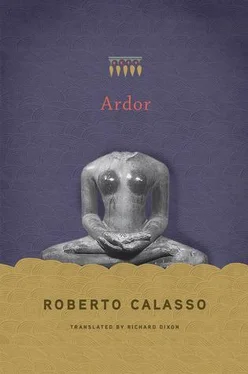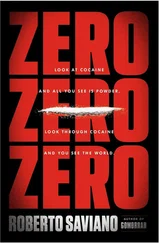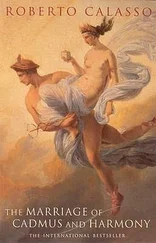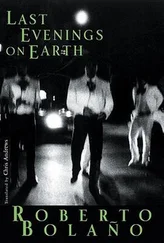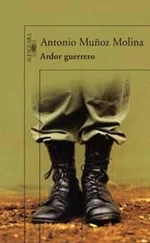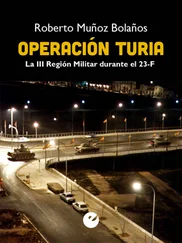Yājñavalkya understood — and replied with supreme subtlety: “By way of the hotṛ , of fire, of speech. For the hotṛ of the sacrifice is speech. What this speech is, is fire. It is the hotṛ , it is liberation, it is total liberation.” Words which meant: “Aśvala, you will escape death by doing what you do every day.” After this reply, every further question would seem superfluous.
Deeply thrilled, Aśvala did not show it, but sought to continue with equal delicacy. Yājñavalkya’s reply had solved the problem that had always worried Aśvala in his work as officiant. But Yājñavalkya was an officiant too. Not a hotṛ but an adhvaryu , one of those concerned with gestures, who busied themselves in the ritual operations, murmuring the formulas in a sort of continual hum. If he did not have full speech, which enabled the hotṛs to save themselves, how could he escape death? This is what Aśvala now sought to ask, with a respectful show of interest: “‘Yājñavalkya, all of this is reached by night and day, is subject to night and day; by what means can a sacrificer free himself from this grip?’ ‘Through the adhvaryu , through sight, through the sun: in fact sight is the adhvaryu of the sacrifice, this sight is the sun yonder, it is the adhvaryu , it is release, it is total release.’”
Like two accomplices in a recursive exchange, both Aśvala and Yājñavalkya had maintained the same formulaic structure in the question and answer. And revealing themselves as allies in the same enterprise: the sacrifice. If the sacrifice could free a certain type of officiant, it would have acted in just the same way for the other, indeed for all the others, including the udgātṛs , the “chanters”—and in the end for the brahmins, a passive and silent presence in the ceremonies, but who were the invisible chamber where everything happened instantaneously. If Yājñavalkya’s answers were correct, the very lives of those who were questioning him could be considered saved, freed: sā muktiḥ, sātimuktiḥ. Ati , “the other side from,” “beyond.” Released “beyond” everything.
* * *
Idaṃ sarvam , “this all”: that is what they called the world and all that exists. And “this all” was prey to death — or rather to Death, a figure, male. This was Aśvala’s first thought — and his first question for Yājñavalkya. Did the “sacrificer,” yajamāna— therefore mankind in general, for whom the officiants operated each day (and Aśvala was one of them) — have some means of escaping death? Did the rites have the power of acting on death, against death? It was not a question of overcoming or eliminating death. That would have been a foolish demand. It was a matter of indicating a way by which someone “is totally released ( atimucyate )” from the grip of death. It wasn’t enough to be released, you had to be released “beyond.” To be released from “this all,” from the whole world.
No question was more elementary and primordial. And Yājñavalkya also gave the most elementary answer: all Aśvala had to do was what he did every day. All he had to do was act as a hotṛ , as an officiant at the sacrifice who utters the right formulas, it was enough for him to use speech and fire. The unity of the hotṛ ’s gestures, of his voice and the fire on which the oblation was burned, were enough, according to Yājñavalkya, for death to come no more, for Death to strike no more.
Question and answer were formulated in just a few words. Before theorems, the axioms had to be set out. And Yājñavalkya had immediately stated the axiom on which life around him was based. From there, if they wished, they could go further into brahman , as King Janaka had asked.
The questions that followed Aśvala’s incisive first question were not superfluous, even though it might seem they were asked out of a desire for completeness (to establish that the other officiants — the udgātṛ , the adhvaryu, and the brahmin — could free themselves, just like the hotṛ ). Aśvala asked Yājñavalkya how it was possible not to be subject to day and night, to the first fifteen days and the second fifteen days (the waxing and waning of the moon). He meant: how can we not be subject to the fading away of all things, how can we not be subject to time? Death was just the sting of time. One had to begin from that torment. But behind death was the actual fact of disappearing. So sacrifice, first and foremost, brought death, with the killing of the victims, but also brought about actual disappearance, with the pouring or burning of oblations in the fire. Release from bondage (to death, to time) came about through a series of acts (the sacrifice) that emphasized that bondage. It was a conundrum that Aśvala wished to leave to other questioners. For now, through Yājñavalkya, he had learned that if you wanted “total release” you had to continue doing exactly what you had always done.
* * *
Aśvala’s question on the udgātṛ and the adhvaryu followed the same lines as the first, substituting death with time. But, in moving on to the role of the brahmin officiant, Aśvala changed register. This reflected the peculiarity of the brahmin’s role. If officiants were like a string quartet, the brahmin would be like an instrumentalist who never plays and intervenes only when the others go wrong. The passive supervision of the brahmin is unlike the role of the other officiants, who are restricted to gesture, action, speech. So Aśvala’s question took a different form. He said: “The atmosphere offers no point of support. What path will the sacrificer take to get to the celestial world?” Yājñavalkya’s answer was: “By way of the brahmin officiant, by way of the mind, of the moon. The brahmin is the mind of the sacrifice.” So release could also be attained by way of the brahmin, thanks to a sudden change of level in the argument, which coincided with the reference to the mind. And it might seem disturbing that something as changeable as the mind (compared for this reason with the moon) could provide a “point of support”—and thus release from mutability itself, from which the gradual disappearance of everything follows. It was another conundrum. But here again, Aśvala, a meticulous officiant, did not wish to linger any further. He was more anxious to find out whether Yājñavalkya was able to give a clear description of the sampads , the “equivalences” that punctuate every stage of the sacrifice. And Yājñavalkya, once again, gave immediate and satisfactory answers. His knowledge was not only metaphysical but also technical.
* * *
Any mention of the “mind,” manas , always means taking a step up (or down — it’s just the same). The mind is never on the same level as everything else. It can be present everywhere or nowhere. In any case, nothing will change in the description and operation of whatever happens. With the same scant persuasiveness, everything can be regarded as inconceivable without the mind, or conceivable only if there is no mind. The prime characteristic of the mind is that of not allowing any expressible certainty as to either its presence or its absence.
This was perfectly in line with the role of the brahmin officiant. It was possible to describe the proper performance of a sacrifice ignoring the presence of the brahmin officiant. But it could also be described as the operation of successive states of mind in the brahmin himself, of the algorithm taking place within him. And Yājñavalkya therefore said that the brahmin officiant “is the mind of the sacrifice.”
* * *
Vedic sacrifice wasn’t just a ceremony during which a prescribed sequence of gestures was carried out, but a speculative tournament where life was put at risk. The brahmodya (the disputation on brahman ), an integral part of the rite, could always end up with the head of one of the disputants bursting out. And it could happen for two reasons: either because the disputant couldn’t answer a question or because he had asked one question too many. An unsatisfactory answer, one question too many: these were the two cases that brought the risk of death. “If you do not explain this to me, your head will burst out” is Yājñavalkya’s threatening response to Śākalya’s insinuations. And it certainly wasn’t a momentary excess: it was part of the rite, it was implicit in the rite. If those contemplating brahman do not risk their head, it means they are not speaking of brahman. On that occasion, when Śākalya could not answer, his head flew into pieces. Yājñavalkya even threatened Gārgī, the woman theologian, this time because Gārgī was in danger of asking too much when she had put the question “With what weft are the worlds of brahman woven?” Gārgī then kept silent and survived.
Читать дальше
